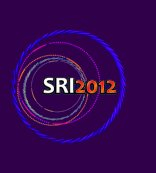Speaker
Dr
Adrian Niculae
(1. PNDetector GmbH, Otto-Hahn-Ring 6, 81739 Munich, Germany)
Description
In recent years, SDD detectors have become indispensable for a large variety of industrial and research applications. Featuring the monolithical integration of the first FET onto the detector, the SDDs manufactured by the companies PNSensor and PNDetector in Munich have established themselves as high resolution, high throughput energy dispersive detectors for X-ray Fluorescence (XRF) or X-ray microanalysis instrumentation.
The classic silicon drift detector with active area from 5 to 100 mm2 shows good energy resolution down to 130 eV at Mn-Ka and very high count rate capability. Often equipped with a Beryllium window, the detectors are well suited for all kinds of Energy Dispersive Spectroscopy (EDS) specifically in XRF analysis. As the good energy resolution is even achieved at -10°C, the detectors are very interesting for applications where the cooling power is limited, e.g. for battery operated Hand-Held instruments. Spectroscopic measurements with large area detectors of 60 and 100 mm2 will be shown.
For applications requiring the ultimate energy resolution, the Silicon Drift Detector Droplet (SD3) becomes the first choice. Due to its special geometry which further reduces the input capacitance down to 50 fF, this detector type leads the SDD performance very close to the physical limits, e.g. energy resolution with 122 eV FWHM @ MnK at count rates of 100 kcps. Its excellent light element performance (e. g. 38 eV @ B_K) makes this detector very suitable for high resolution EDS as for Microanalysis in Scanning and Transmission Electron Microscopes (SEM and TEM). The SD3 detector is available in a compact housing with active area varying from 5 to 30mm2. Recent developments in terms of further minimizing the input capacitance with an optimized FET design including measurement results of optimized SDD devices will be presented.
Very large area detectors with large solid angle coverage are often mandatory for many scientific applications like in synchrotron experiments. Whereas single cell SDD modules are available up to an active area of 100 mm2, for significantly larger active areas monolithical arrays of SDDs are the first choice. Moreover, multichannel SDD arrays can also cope with much higher count rates than the single devices, which again make them very attractive for synchrotron applications where the count rate values can be driven very high. Multielement SDD modules with total active areas up to 600 mm2 combining a number of 3, 4, 6 or 7 cells, with energy resolution values down to 130 eV and count rate capability of up to 5x106 cps are available in various package configurations. New spectroscopic measurements with a 6x100 mm2 SDD detector will be reported.
Author
Dr
Adrian Niculae
(1. PNDetector GmbH, Otto-Hahn-Ring 6, 81739 Munich, Germany)
Co-authors
Dr
Heike Soltau
(1. PNDetector GmbH, Otto-Hahn-Ring 6, 81739 Munich, Germany)
Dr
J. Herrmann
(1. PNDetector GmbH, Otto-Hahn-Ring 6, 81739 Munich, Germany)
Dr
J. Treis
(1. PNDetector GmbH, Otto-Hahn-Ring 6, 81739 Munich, Germany)
Prof.
Lothar Strüder
(3. Semiconductor Laboratory of the MPI, Otto-Hahn-Ring 6, 81739 Munich, Germany)
Dr
M. Bornschlegl
(2. PNSensor GmbH, Römerstr. 28, 80803 Munich, Germany)
Dr
O. Jaritschin
(1. PNDetector GmbH, Otto-Hahn-Ring 6, 81739 Munich, Germany)
Dr
Peter Lechner
(2. PNSensor GmbH, Römerstr. 28, 80803 Munich, Germany)
Dr
R. Eckhardt
(1. PNDetector GmbH, Otto-Hahn-Ring 6, 81739 Munich, Germany)

